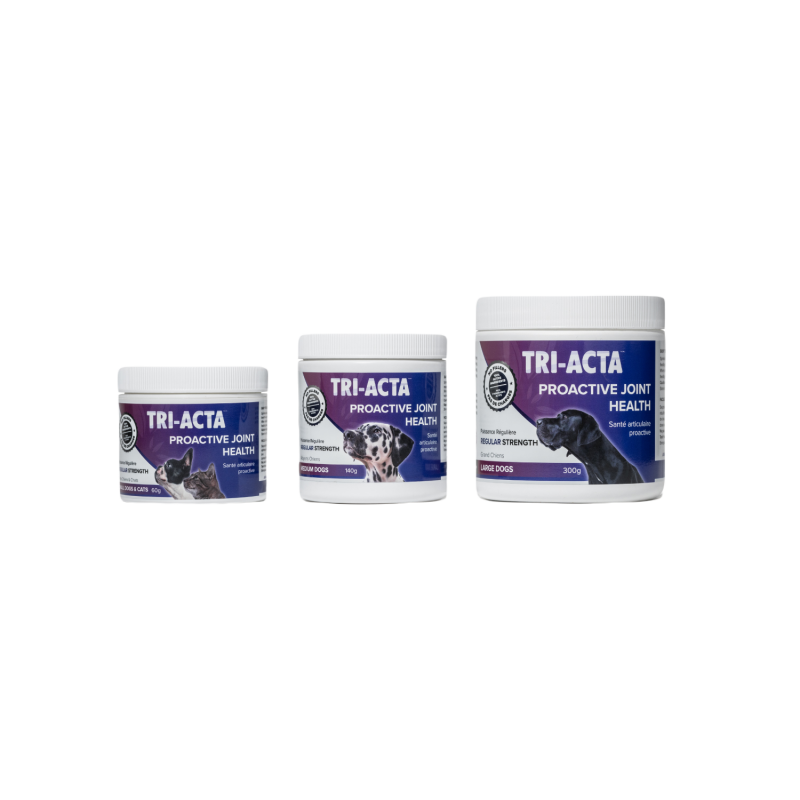Table of Contents
Ah, the great outdoors – a playground for you and your furry friend. But amidst the adventures lies a sneaky foe: Lyme disease. Yep, that pesky tick-borne troublemaker. It's not just a worry for you; your four-legged pal is also in the line of fire.
Don't worry, though. Integricare has got your back (and your dog's too).
We're covering everything from warning signs to how to treat Lyme disease in dogs and even some sneaky preventive measures.
Lyme disease doesn't discriminate; it's a menace to humans and hounds alike. But armed with the knowledge we're about to provide, you can outsmart even the trickiest ticks.
What Is Lyme Disease in Dogs?
Lyme disease in dogs is a tick-borne illness caused by the spirochete bacterium, Borrelia burgdorferi. This microscopic troublemaker is transmitted to our furry friends through the bite of an infected tick. Once introduced into the bloodstream, the Lyme disease organism ventures through the body, often finding a cozy spot to settle in joints or kidneys.
The primary culprit behind Lyme disease in dogs is the infamous deer tick, also known as the black-legged tick. These tiny terrors are particularly prevalent in the midwest and the eastern United States and across Canada, with Ontario bearing the highest proportion of their population.
But how do you know if your dog has fallen prey to this stealthy foe?
Let's break down some common symptoms:
|
Symptoms |
Description |
|
Lethargy |
A noticeable lack of energy or enthusiasm, with your pup seeming unusually tired or sluggish. |
|
Lameness |
Difficulty in moving or a reluctance to put weight on certain limbs, often accompanied by stiffness or soreness. |
|
Joint Swelling |
Visible swelling or inflammation around the joints, which may cause discomfort or pain for your dog. |
|
Fever |
Elevated body temperature, typically indicated by warm ears, nose, or paw pads, along with general signs of illness such as shivering or lethargy. |
|
Loss of Appetite |
A decrease in interest or refusal to eat, which may be accompanied by nausea or vomiting. |
|
Increased Urination |
An uptick in the frequency or volume of urination, possibly indicating kidney involvement. |
|
Kidney Problems |
More severe cases of Lyme disease may lead to kidney complications, manifesting as urinary issues, fluid retention, or even renal failure. |
If you notice any of these symptoms in your furry companion, it's essential to seek veterinary care promptly. Lyme disease can lead to serious health complications if left untreated, but with timely intervention and proper treatment, your dog can bounce back to their playful, tail-wagging self in no time.
Symptoms of Lyme Disease in Dogs
Before diving into the details of Lyme disease in dogs, it's crucial to lay the groundwork by understanding the various symptoms that characterize this prevalent tick-borne illness.
Much like pieces of a puzzle, these symptoms paint a complete picture of the disease's impact on our canine companions.
Lethargy
Lethargy, often regarded as a silent indicator of underlying health issues, can be a telltale sign of Lyme disease in dogs. Characterized by a lack of energy and enthusiasm, doldrums may manifest gradually, subtly affecting a dog's daily activities.
From reluctance to engage in play to prolonged periods of rest, lethargy warrants careful observation by pet owners. Understanding the potential association between lethargy and Lyme disease prompts proactive measures, including veterinary consultation and diagnostic testing.
Lameness
Lameness, or limping, is another common symptom of Lyme disease in dogs, indicative of joint inflammation (glucosamine for dogs is perfect for added relief) and discomfort.
Dogs affected by Lyme disease may exhibit lameness in one or more limbs, accompanied by:
- Stiffness
- Reluctance to bear weight
- Hobbling when walking
The severity of lameness can vary, ranging from intermittent discomfort to persistent mobility issues. Recognizing lameness as a potential red flag for Lyme disease in dogs underscores the importance of veterinary evaluation and personalized treatment interventions.
Fever
As a physiological response to infection, fever is the body's defense mechanism against invading pathogens, including Borrelia burgdorferi, the bacterium responsible for Lyme disease in dogs.
Dogs with Lyme disease may experience fever as their immune system mounts a response to combat the bacterial infection.
Monitoring a dog's body temperature and recognizing fever as a symptom of Lyme disease prompts timely veterinary intervention, facilitating early diagnosis and management strategies.
Joint Pain
Joint pain, often synonymous with arthritis, is a hallmark manifestation of Lyme disease in dogs, stemming from inflammation and joint damage caused by Borrelia burgdorferi.
Dogs afflicted with Lyme disease may exhibit signs of joint pain, such as:
- Reluctance to move
- Stiffness
- Vocalization when touched or manipulated
The subtle signs of joint pain in dogs highlight the necessity for pet owners to keenly observe their pets and work closely with veterinarians to ensure this isn’t Lyme disease-related.
If related to age or another condition, your vet will likely recommend therapeutic dog supplements, like Tri-Acta for Pets H.A., to ease joint pain and mobility,
TRI-ACTA H.A. for Pets
Our maximum strength formula is optimally designed to accelerate the formation of cartilage, minimize inflammation, expedite the healing process, and improve joint conditions.

Loss of Appetite
When your furry friend stops eating, that can be a concerning symptom, which can signify underlying health issues, including Lyme disease.
Dogs affected by Lyme disease may exhibit a decreased interest in food, leading to reduced caloric intake and nutritional deficiencies. Recognizing loss of appetite as a potential consequence of Lyme disease prompts prompt veterinary attention alongside the potential for dietary changes to ensure adequate nourishment and support the dog's overall health and recovery.
Additional Symptoms
Beyond the symptoms mentioned above, Lyme disease in dogs may present a range of additional manifestations, including but not limited to:
- Swollen lymph nodes
- Kidney dysfunction
- Neurological abnormalities
- Respiratory distress
- Cardiac complications
- Skin lesions
Each of the above symptoms warrants thorough assessment and consideration by pet owners and veterinarians, guiding diagnostic investigations and treatment strategies tailored to the individual dog's needs.
Neurological Symptoms of Lyme Disease in Dogs
As we already know, Lyme disease in dogs often reveals itself through a myriad of signs, ranging from subtle to severe. Among these indications, neurological symptoms significantly indicate the disease's impact on your pet's health
From disorientation to weakness, tremors, seizures, nerve pain, and beyond, these neurological conditions underscore the often unexpected nature of Lyme disease in dogs.
Disorientation
Noticing your furry friend in a lost, confused state is definitely not a fun experience.
Disorientation, characterized by confusion and lack of spatial awareness, is a notable neurological symptom of Lyme disease in dogs. Affected dogs may exhibit:
- Signs of confusion
- Wandering aimlessly
- Displaying altered behavior patterns
Disorientation can manifest as difficulty recognizing familiar surroundings or disorganized movement, which can be a telling sign of underlying neurological dysfunction.
Weakness
Weakness, a common neurological symptom in dogs with Lyme disease, epitomizes reduced muscle strength and coordination. Dogs affected by Lyme disease may display generalized or focal weakness in specific limbs, hindering their mobility and physical activity.
Frailty can significantly impact your dog's quality of life, compromising their ability to perform routine tasks and engage in recreational activities.
Identifying weakness as a neurological indication of Lyme disease prompts proactive measures, including supportive care, canine physical therapy, and targeted interventions to address muscle weakness and enhance mobility.
Tremors
Ever witnessed your dog trembling uncontrollably like they're caught in an invisible earthquake?
That's tremors making an unwelcome appearance.
It's a heartbreaking sight, watching your furry friend struggle with these involuntary shakes as if trapped in a body that's gone haywire.
These tremors may occur intermittently or persistently, affecting one or more areas of the body. Dogs affected by Lyme disease may experience tremors in the limbs, head, or entire body, reflecting underlying neurological dysfunction.
Tremors can vary in intensity and frequency, ranging from mild quivering to pronounced shaking, impacting a dog's comfort and well-being.
Seizures
Have you ever caught your pup amid an unexpected, chaotic episode of flopping and flailing? That's seizures gate-crashing the paw-ty, uninvited and unwelcome
Seizures, sudden and uncontrolled episodes of neural discharge, are a concerning neurological symptom associated with Lyme disease in dogs. Dogs affected by Lyme disease may experience seizures of varying severity, ranging from mild focal seizures to generalized tonic-clonic seizures.
Posing significant health risks and emotional distress for both the dog and their owner, seizures can manifest as:
- Convulsions
- Loss of consciousness
- Abnormal behavior
Identifying seizures as a potential complication of Lyme disease prompts immediate veterinary evaluation and implementation of seizure management strategies, including medication, monitoring, and lifestyle modifications.
Nerve Pain
Nerve pain, also known as neuropathic pain, is a distressing neurological symptom observed in dogs with Lyme disease.
Often localized to specific areas of the body, dogs affected by Lyme disease may experience nerve pain as a sensation that's:
- Tingling
- Burning
- Shooting
Nerve pain can be debilitating, impacting a dog's mobility, comfort, and overall quality of life. Determining nerve pain as a neurological indication of Lyme disease in dogs prompts comprehensive pain management strategies, including medication, physical therapy, and alternative therapies to alleviate discomfort.
How to Test for Lyme Disease in Dogs
Diagnosing Lyme disease in dogs involves a careful evaluation of history, physical signs, and specialized diagnostics. Understanding the testing process is essential for the timely detection and management of this tick-borne illness.
By familiarizing yourself with these diagnostic tools, you can partner effectively with your veterinarian to ensure the health and well-being of your furry companion.
Here are three testing methods for Lyme disease in dogs:
|
Test Name |
Purpose |
Detection Timing |
|
C6 Test |
Detects antibodies against the protein C6, indicating active infection |
3-5 weeks after a tick bite |
|
Quant C6 Test |
Measures C6 antibody levels, aiding in determining antibiotic need |
After the initial C6 test and urinalysis |
|
Urinalysis |
Assesses kidney function and aids in determining treatment |
Performed simultaneously with the Quant C6 test |
The first method utilized in diagnosing Lyme disease in dogs is the C6 Test, designed to detect antibodies against the protein C6. These antibodies signify an active infection with the Borrelia burgdorferi bacterium, transmitted through the bite of an infected tick.
A C6 Test is a crucial tool as it can identify antibodies in the bloodstream within 3-5 weeks following a tick bite, even before clinical signs of illness are exemplified in the dog.
After a positive result from the C6 Test, veterinarians often conduct a Quant C6 Test. This test measures the levels of C6 antibodies present in the dog's bloodstream, providing valuable insight into the severity of the infection. When combined with clinical evaluation and urinalysis, the Quant C6 test helps guide treatment decisions, ensuring that affected dogs receive the appropriate therapeutic interventions tailored to their individual needs.
In conjunction with blood tests, urinalysis serves as a complementary diagnostic tool in assessing Lyme disease in dogs. Urinalysis provides valuable information regarding kidney function, which can be affected by Lyme disease, particularly in cases of advanced infection.
Simultaneous performance of urinalysis with the Quant C6 Test allows for a comprehensive evaluation of the dog's overall health status and aids in formulating an effective treatment plan.
Lyme Disease in Dogs Treatment
Now, the question on everyone's mind is, "Can Lyme disease be cured in dogs?"
When tackling Lyme disease treatment in dogs, a mixed approach is often necessary to address the infection and any accompanying symptoms.
Here's a breakdown of the treatment for Lyme disease in dogs commonly employed:
- Antibiotic therapy: Lyme disease is typically treated with antibiotics, with doxycycline being the most commonly prescribed medication. Administered orally, doxycycline is typically given for four weeks to eliminate the Borrelia burgdorferi bacterium responsible for the infection.
- Pain management: Joint discomfort is a common symptom of Lyme disease in dogs, and alleviating pain is a crucial aspect of treatment. Your veterinarian may recommend pain medications such as nonsteroidal anti-inflammatory drugs (NSAIDs) to help your furry friend find relief and improve their quality of life during recovery.
- Monitoring and follow-up: For asymptomatic dogs, close monitoring by you and your veterinarian is essential. This may involve regular check-ups and routine urine checks to assess kidney function and ensure your dog remains asymptomatic and free from complications associated with Lyme disease.
In some cases, Lyme disease can lead to complications, such as Lyme nephritis, a severe form of kidney disease. When faced with such complications, a more intensive treatment approach is necessary to address the underlying issues and manage symptoms effectively.
Here's what you can expect:
- Hospitalization: Dogs diagnosed with Lyme nephritis often require hospitalization to receive intensive care and monitoring. Hospitalization allows veterinary professionals to closely monitor your dog's condition and provide immediate medical intervention.
- IV fluid therapy: Intravenous (IV) fluid therapy is crucial in managing Lyme nephritis as it helps maintain hydration, support kidney function, and flush toxins from the body. IV fluids are administered under the supervision of veterinary staff to ensure optimal hydration and electrolyte balance.
- Medications: Dogs with Lyme nephritis may require a combination of medications to address various aspects of the condition. This may include medications to help reduce protein loss through the kidneys, alleviate nausea, manage blood pressure, and provide symptomatic relief.
- Nutritional Support: Proper nutrition is vital for dogs undergoing treatment for Lyme nephritis. Your veterinarian may recommend a specialized diet tailored to support kidney function and meet your dog's nutritional needs during recovery.
- Antibiotics: Antibiotics remain a cornerstone of treatment for Lyme nephritis, as they help combat the underlying bacterial infection. In addition to addressing the primary infection, antibiotics may help prevent secondary infections and promote healing.=
- Immunosuppressive drugs: In some cases, immunosuppressive drugs may be prescribed to help reduce inflammation and prevent further kidney damage. These medications suppress the immune response, mitigating the autoimmune component often associated with Lyme nephritis.
Treating Lyme disease in dogs requires a comprehensive approach addressing the infection and associated complications. From antibiotic therapy and pain management to intensive care and specialized treatments for complications like Lyme nephritis, veterinary professionals are equipped with various tools and strategies to help your furry friend recover and thrive.
Lyme Disease Prevention in Dogs
The first line of defense against Lyme disease begins with flea and tick prevention for dogs. Make it a habit to thoroughly inspect your furry friend for ticks after outdoor adventures, paying close attention to areas where ticks commonly attach, such as the:
- Ear
- Neck
- Between the toes
Removing ticks reduces the risk of disease transmission and prevents potential complications associated with tick bites. Remember, early detection is critical to preventing Lyme disease and other tick-borne illnesses from taking hold.
Prevention is always better than cure, and one of the simplest ways to protect your dog from Lyme disease is to avoid allowing them to roam in tick-infested areas whenever possible. Ticks thrive in wooded areas, tall grasses, and shrubby environments, so be mindful of where you take your dog for walks or outdoor excursions.
Opt for well-maintained trails and open spaces, and steer clear of dense vegetation where ticks are more likely to lurk. Minimizing your dog's exposure to tick habitats reduces their risk of encountering these pesky parasites and contracting Lyme disease.
Another cornerstone of Lyme disease prevention in dogs is using tick prevention products.
Fortunately, various FDA-approved options are available, including:
- Topical treatments
- Oral medications
- Tick collars
Consult with your veterinarian to determine which tick prevention product best suits your dog based on age, size, lifestyle, and geographical location. To ensure maximum efficacy throughout the year, remember to administer these products consistently and according to the manufacturer's instructions.
In addition to general tick prevention products, specific tick products are approved for dogs that target the bacteria responsible for Lyme disease. These products kill ticks before they can transmit the Lyme disease-causing bacterium, effectively reducing the risk of infection. Incorporating these specialized tick prevention products into your young or old dog's preventive care regimen adds an extra layer of protection against Lyme disease, providing peace of mind and optimal health for your furry companion.
Vaccination may be a prudent preventive measure for dogs at higher risk of Lyme disease exposure, such as those residing in endemic areas or with a history of tick encounters. Lyme disease vaccines are available for dogs and have been shown to protect against the disease in susceptible individuals.
However, vaccination decisions should be made in consultation with your veterinarian, considering factors such as your pets’ overall health and lifestyle. Your veterinarian can assess whether vaccination is appropriate for your dog and recommend the most suitable vaccination protocol based on their needs.
FAQs—Lyme Disease in Dogs
Curious about Lyme disease in dogs? You're not alone. This FAQ section aims to provide concise answers to some of pet owners' most common questions about this prevalent tick-borne illness.
Can Lyme Disease in Dogs be Cured?
Yes, Lyme disease in dogs can be effectively treated with antibiotics, typically doxycycline, and supportive care measures. Many dogs recover fully and lead healthy lives with prompt diagnosis and comprehensive treatment.
How Common is Lyme Disease in Dogs?
Lyme disease is prevalent in regions where infected ticks are endemic. While incidence varies, it remains one of the most common tick-borne illnesses affecting dogs in North America and beyond.
What Are the Symptoms of Lyme Disease in Dogs?
Symptoms include lethargy, lameness, fever, joint pain, and loss of appetite. Lyme disease in dogs long-term effects include severe complications such as kidney disease or neurological issues if left untreated
Can Cats Get Lyme Disease?
While less common in cats, tick bites can still infect them. Symptoms may include lethargy, fever, lameness, and loss of appetite.
Are There Vaccines for Lyme Disease in Dogs?
Yes, vaccines are available. They stimulate the immune system to produce antibodies against the bacterium, providing protection. Vaccination is recommended for dogs in high-risk areas.
Lyme Disease in Dogs—Final Thoughts
Lyme disease is a significant concern for dog owners. Still, armed with knowledge about its symptoms, treatment options, and prevention strategies, we can effectively protect our furry friends from this tick-borne illness.
By recognizing the signs of Lyme disease early on, seeking prompt veterinary care, and implementing preventive measures such as regular tick checks and tick prevention products, we can minimize the risk of infection and ensure the well-being of our canine companions.
For those seeking to provide comprehensive care for their dogs, integrating quality pet supplements into their daily routine can be beneficial.
Remember, as responsible pet owners, it's our duty to stay informed, proactive, and attentive to our dogs' health needs. With diligence, care, and the support of trusted resources like Integricare, we can provide our furry friends with the best possible care, ensuring they lead fulfilling and vibrant lives by our side.
We at Integricare offer the best dog products specially formulated to support joint health, mobility, and overall wellness in dogs. By incorporating these supplements into their regimen, pet owners can help keep their dogs happy, healthy, and thriving for years to come.
There are a few key ingredients in Integricare products that make them stand out from the competition. First, we include two types of glucosamine in our products, Glucosamine Sulfate and Glucosamine Hydrochloride. Glucosamine Sulfate provides essential sulfur to your dog’s joints, a key building block in maintaining joint tissues. Glucosamine Hydrochloride, on the other hand, is highly bioavailable, which means that your dog’s body can absorb and use it quickly. The combination of these two types of glucosamine ensures that your dog gets the maximum therapeutic value from the joint supplement. We also include Chondroitin, which aids the glucosamine to help maintain and repair cartilage. MSM, or methylsulfonylmethane, is a natural anti-inflammatory that helps your pup stay pain-free. Our products also contain 100% active ingredients, so you can be sure your dog isn't getting anything other than joint-healing power.
TRI-ACTA for Pets
A proactive approach for developing and younger adult pets to maintain optimal joint health mobility, minimize inflammation and fend off age-related ailments.

Contact us if you have any additional questions.
Newsletter Signup
Subscribe to our newsletter to receive the latest news and exclusive offers.
.jpg?height=2000&name=Cliick_Integricare-DISPLAY-REVISEDV2%20(1).jpg)
Proactive & Therapeutic Joint Supplements
When given daily, Integricare joint supplements recover bone and joint injuries faster and help prevent mobility injuries from happening in the first place.











